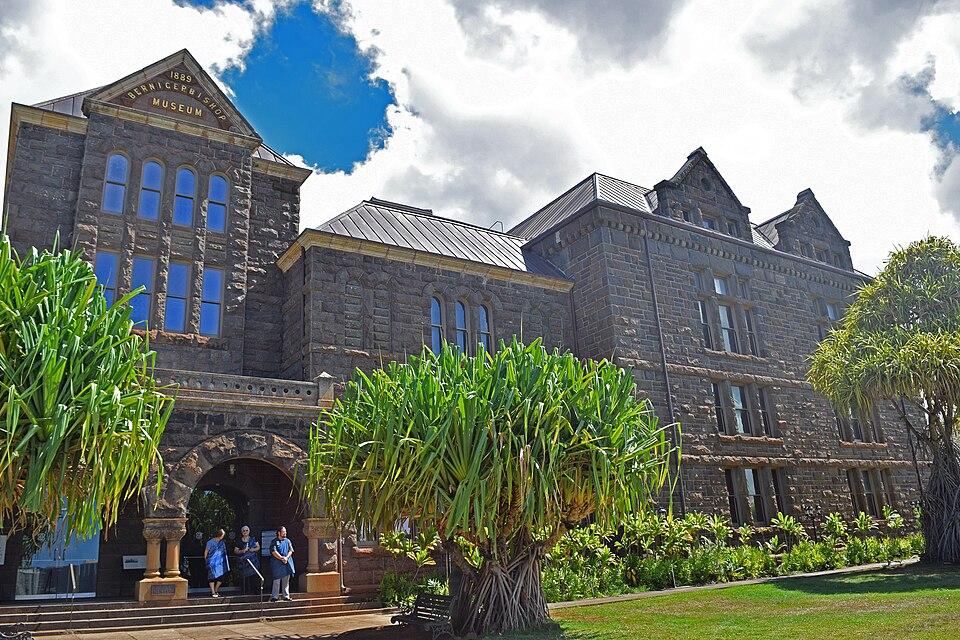
Bishop Family Legacy: Estate, Museum & Hawaiʻi History
Share
The Bishop Family in Hawaiʻi: Origins, Legacy, and Their Impact Today
Few names hold as much significance in Hawaiʻi’s modern story as the Bishop family. Their legacy reaches back to the Hawaiian Kingdom’s royal era, intertwining with some of the islands’ most powerful aliʻi (chiefly) families and extending to the present through massive landholdings, educational institutions, and cultural preservation efforts.
From their 19th-century marriage that linked American business to Hawaiian royalty, to their stewardship of land and culture through the Bishop Estate and the Bishop Museum, the Bishops’ story is essential to understanding Hawaiʻi past and present.
Charles Reed Bishop: From New York to Hawaiʻi
The “Bishop” name in Hawaiʻi originates with Charles Reed Bishop, born in New York in 1822. Bishop arrived in Honolulu in 1846 as a young businessman, planning only a stopover en route to the Pacific Northwest. But he decided to settle permanently in the islands, recognizing their growing importance as a trading hub.
Bishop proved to be an ambitious and capable entrepreneur. He co-founded Bishop & Co., a financial institution that eventually became what we know today as First Hawaiian Bank, one of the state’s largest financial institutions. Through his banking success, Charles Bishop grew deeply connected to Hawaiian society, especially among the aliʻi.
Princess Bernice Pauahi Bishop: A Royal Heiress
Charles Bishop’s destiny would become permanently tied to Hawaiʻi through his marriage in 1850 to Princess Bernice Pauahi Pākī, later known as Princess Bernice Pauahi Bishop.
Pauahi was born in 1831 to high-ranking chiefs Abner Pākī and Laura Kōnia, and was the great-granddaughter of King Kamehameha I. She was raised in a prominent royal household and was well educated, attending the Chiefs’ Children’s School.
Though Pauahi was offered the throne of the Hawaiian Kingdom, she declined, instead focusing on philanthropic goals and preserving her family’s vast lands.
When Pauahi died in 1884, she left an enormous estate in a will that laid the groundwork for one of Hawaiʻi’s most important educational and cultural legacies.
The Bishop Estate: A Royal Trust
Princess Pauahi’s will created the Bernice Pauahi Bishop Estate, which was designed to fund educational opportunities for Native Hawaiian children. The estate, established in 1884, is the largest private land trust in Hawaiʻi, controlling about 365,000 acres across the islands.
Its best-known beneficiary is Kamehameha Schools, founded in 1887 with proceeds from Pauahi’s estate. The institution aimed to provide high-quality education to Native Hawaiian youth, a mission that continues today, with campuses on Oʻahu, Maui, and Hawaiʻi Island serving thousands of students annually.
The Bishop Estate’s mission is guided by Pauahi’s will and her vision of uplifting Native Hawaiian people through education and cultural preservation. Revenue from the trust’s landholdings — which include prime urban real estate in Honolulu as well as rural agricultural lands — supports these programs.
The Bishop Museum: Preserving Hawaiian Culture
To honor his wife’s memory, Charles Reed Bishop established the Bernice Pauahi Bishop Museum in 1889 in Honolulu. He envisioned the museum as a place to safeguard and celebrate Hawaiian history, culture, and science.
Housed on the original campus of Kamehameha Schools, the museum quickly became the repository of aliʻi heirlooms, cultural artifacts, and natural specimens. Today, the Bishop Museum holds millions of objects, from royal feather cloaks and ancient tools to ethnographic records of Polynesia, making it one of the most important cultural institutions in the entire Pacific.
Visitors to the Bishop Museum today can explore exhibits on the Hawaiian monarchy, view traditional voyaging canoes, and even learn about Hawaiʻi’s unique flora and fauna. The museum continues to be a vital educational and cultural hub, hosting community programs, lectures, and research initiatives.
Bishop Estate Land Holdings Today
As of 2025, the Bishop Estate (officially the Trustees of the Estate of Bernice Pauahi Bishop) remains the largest private landowner in Hawaiʻi. Its holdings, approximately 365,000 acres, encompass rural, urban, agricultural, and conservation lands on Oʻahu, Hawaiʻi Island, Maui, Molokaʻi, and Kauaʻi.
The Estate is a major player in local real estate, managing leases for shopping centers, hotels, and agricultural tenants. It also supports cultural and educational endeavors through its revenue stream, investing in Native Hawaiian-focused scholarships, language revitalization efforts, and community well-being programs.
Critics have sometimes challenged the estate’s commercial strategies, questioning whether all land uses align with Princess Pauahi’s vision. But supporters argue the estate has managed to balance business realities with cultural mission, sustaining Kamehameha Schools and other Hawaiian-serving programs well into the future.
Bishop Family Legacy in Modern Hawaiʻi
The Bishop family’s story is inseparable from the modern history of Hawaiʻi. Through Charles Reed Bishop’s financial skills, Bernice Pauahi’s royal legacy, and their shared commitment to Hawaiian people, they created a philanthropic empire that has shaped generations.
Kamehameha Schools graduates today include educators, scientists, artists, engineers, and civic leaders who carry Pauahi’s vision forward. The Bishop Museum remains the preeminent place for learning about Hawaiʻi’s history and Pacific cultures.
In a rapidly changing world, the Bishop Estate’s land stewardship — from leasing to conservation — remains a topic of passionate debate, reflecting how deeply these lands are woven into the social fabric of the islands.
Visiting the Bishop Museum Today
If you want to connect with the Bishop family’s legacy firsthand, a visit to the Bishop Museum is a must:
-
Location: 1525 Bernice Street, Honolulu, Oʻahu
-
Highlights: The Hawaiian Hall’s priceless royal artifacts, science exhibits on volcanoes, and an interactive planetarium
-
Insider Tip: Check their event calendar for hula performances, cultural demonstrations, and local food pop-ups
For many, standing among the feather cloaks and ancestral portraits brings Princess Pauahi’s legacy vividly to life.
Final Thoughts: An Enduring Hawaiian Legacy
From royal lineages to banking empires, from sacred heirlooms to schoolchildren thriving in modern classrooms, the Bishop family’s influence on Hawaiʻi is immeasurable.
Their legacy lives on not only through land and buildings, but through the hearts and minds of Native Hawaiians empowered by Princess Pauahi’s gift. Whether you walk the halls of the Bishop Museum or hike through Bishop Estate lands, you are tracing the path of a family whose generosity and vision continue to shape the Hawaiian Islands today.
